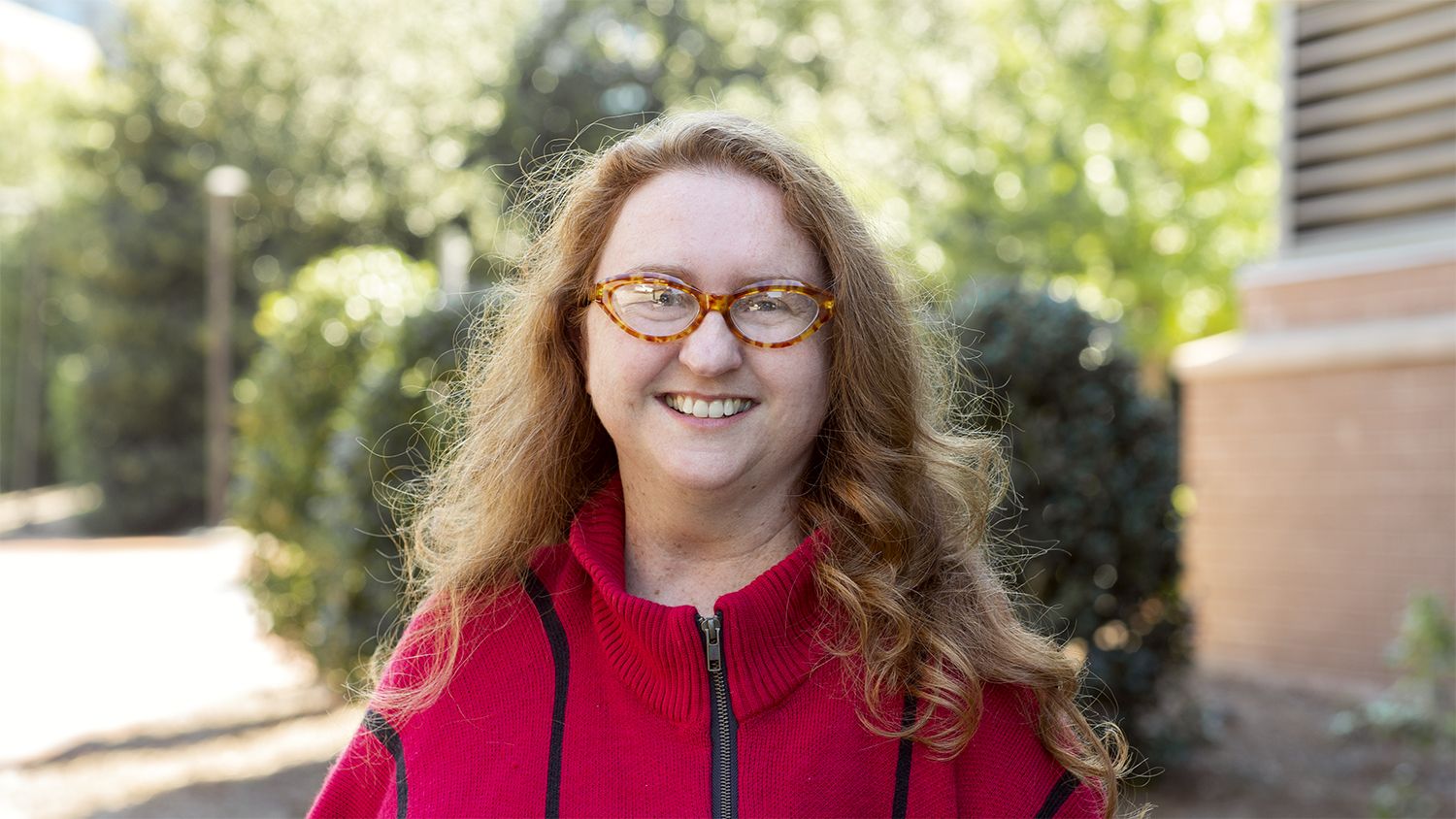When universities everywhere were moving to remote emergency teaching as the pandemic struck, it was not an issue for faculty who regularly teach online. However, at NC State, a lot of faculty had to turn on a dime in two weeks to move their courses online. There is a big difference between preparing an effective online course and simply recording lectures and putting them in Moodle.
We reached out to Kimberly Allen, the new associate director of academic programs in the College of Agriculture and Life Sciences (CALS), for some insight on how this semester is going from her conversations with students and faculty.
Allen brings a wealth of insight from her new role combined with her experience as an online professor, extension specialist, former director of the Youth, Family, and Community Sciences online graduate program and an inaugural DELTA Faculty Fellow.
Allen has been having conversations with faculty and students about the pandemic. Some of her takeaways are below.
What is working well for students?
- Creating a structured schedule helps students be successful (for example, defined due dates and frequent communication with the instructor about deliverables). This is true whether the course is online or in-person.
- Keeping communication clear and in multiple places. Yes, it is probably in the syllabus, but reminders and check-ins go a long way for students in online and distance education (ODE) courses.
- Interacting with instructors, whether online or in-person, builds relationships and strengthens academic success. Most students want live engagements (Zoom meetings count).
- Flexibility has become more important during the pandemic, and students benefit from logging on from home where they can juggle other responsibilities more easily.
- Recording lectures and/or offering synchronous distance options is crucial so students can engage even if they need to miss class.
Students who enroll in ODE degree programs still prefer their online format, and nothing has really changed for them.
What isn’t working well for students?
- Students still want to have the social connections that campus life brings. Although more activities are available online now, there is always the knowledge that the pandemic isn’t over, and some are concerned that they might lose those connections.
- Asynchronous learning is outside of students’ comfort zones. The flexibility of being able to log in whenever is convenient, but overall, traditional students tend to prefer the social aspect of being on-campus and to some extent, “in” the class.
- Learning technical or complex concepts is still desired to be done in person. Allen says what students really want is HyFlex courses, with some chances to be on-campus but options to do things like lectures online.
- Quality instruction is as important as ever; quality online instruction takes time and effort, and students prefer high-quality distance education courses.
- Flexibility and compassion go a long way. There are still a number of emotions at play; students are happy to be back but still have worries and stress related to living in and being a student during a pandemic.
What about Allen’s advice for faculty who want to improve their online course elements?
- Meaningful learning happens via engagement. Whether online or in-person, facilitating engagement is key to good teaching.
- Make time to prepare for online learning components. Just like preparing for any course, quality takes time and effort.
- Share best practices. Some faculty do not feel like they know how to teach online or have knowledge of the best practices. There is so much information to sift through about online best practices. Allen suggests faculty first contact DELTA, but also share best practices and have discussions with colleagues in their field, and join Facebook or LinkedIn groups to get in on the discussions.
- Lean toward watching your own online recordings and compare them to the Quality Matters (QM) rubrics that are super helpful.
- Get help. When starting to rethink your courses to prepare for hybrid or online delivery, reach out to DELTA. Allen has used the resources and programs that DELTA offers — from DELTA Grants to workshops, to QM training.
What has changed since the pandemic?
- NC State administration has shown increased interest in online learning. Just this year, NC State’s first online bachelor’s degree in Agricultural Science was approved.
- There is a shift toward acceptance of online learning after the pandemic. Allen recently made a call for faculty to contribute to the CALS Online Academy, a program that puts CALS courses online for non-credit, which increased the number of professors providing courses from two to five.
- In general, faculty and students are much more open to online learning.
- A student-centered approach gives students what they need when they need it. Students desire — and often need — more accessibility and flexibility.
“Online programs offer a great solution if they are developed with intention and quality,” says Allen.
Related resources:
Examples of FB and Twitter Communities (not endorsements, just examples):
- Pandemic Pedagogy
- Higher Ed Learning Collective
- @NCStateDELTA
- @EDUCAUSEreview
- @chronicle
- @Flowerdarby
- @insidehighered
- @NCStateOFE
- @teachprof
- @facultyfocus
This post was originally published in DELTA News.
- Categories:



